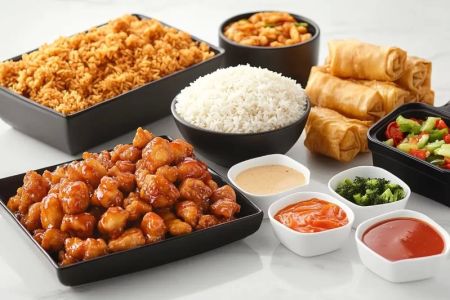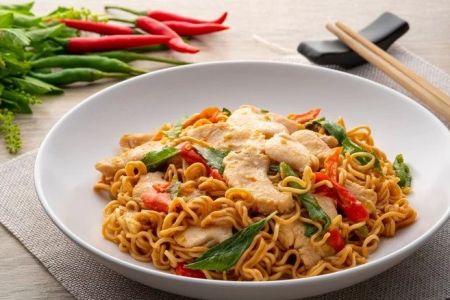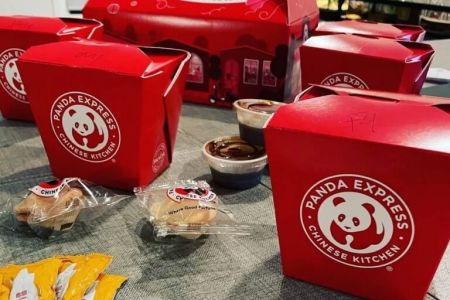- 1-What-is-chino-food
- 2-Historical-background-and-cultural-roots
- 3-Key-ingredients-and-flavors
- 4-Popular-dishes-and-examples
- 5-Where-to-find-authentic-chino-food
1. Understanding What Chino Food Means
Chino food is a culinary term that might sound unfamiliar to many, but it refers to a fascinating fusion of Chinese and Latino flavors, particularly popular in some American communities. Unlike traditional Chinese cuisine, chino food blends Chinese cooking techniques and ingredients with Latin American influences, resulting in a unique and vibrant food style that has its own identity. This fusion reflects the cultural exchange and culinary creativity born from the interaction between Chinese immigrants and Latino populations, especially in regions such as California and Mexico.
The term "chino" itself, in this context, is often used colloquially to indicate something of Chinese origin or influence, but when paired with food, it denotes a special hybrid cuisine that defies simple categorization. For those curious about “what is chino food,” understanding its roots helps appreciate the diversity and inventiveness in modern gastronomy.
2. Historical Background and Cultural Roots of Chino Food
The story of chino food starts with the migration of Chinese immigrants to Latin America and the United States during the 19th and early 20th centuries. These immigrants brought with them traditional Chinese culinary skills but adapted their recipes based on locally available ingredients and the palates of Latino communities. Over time, this cultural blending led to the creation of dishes that combine Chinese staples like soy sauce, noodles, and stir-frying with Latin spices, chili peppers, and fresh herbs.
One compelling example is the evolution of dishes in Peru, where "Chifa" cuisine, a well-known form of Chinese-Peruvian fusion, shares many characteristics with chino food. Similarly, in California, Chinese-Mexican fusion restaurants have become popular, offering tacos filled with char siu pork or stir-fried vegetables seasoned with cumin and cilantro. These culinary hybrids highlight how chino food is more than just a flavor profile—it’s a reflection of shared history and multicultural innovation.
3. Key Ingredients and Flavors That Define Chino Food
The essence of chino food lies in its distinctive combination of ingredients and cooking methods from both Chinese and Latino traditions. Core ingredients often include soy sauce, garlic, ginger, and sesame oil, which are common in Chinese cuisine. At the same time, Latino staples such as chili peppers, cilantro, lime, and corn tortillas are integrated to create new taste dimensions.
This fusion typically features a balance of savory, sweet, and spicy flavors. For example, dishes might have the deep umami of soy-marinated meats paired with the brightness of fresh lime juice and the heat from jalapeños or chipotle. This interplay of tastes makes chino food exciting and accessible to those who enjoy bold and layered flavors.
4. Popular Chino Food Dishes and Real-Life Examples
To get a clearer picture of chino food, it helps to look at some signature dishes that illustrate the fusion’s creativity. One popular dish is the “Chino taco,” where traditional Mexican tortillas are filled with Chinese-style roasted pork or stir-fried vegetables seasoned with hoisin sauce. Another example is fried rice cooked with Latin spices and mixed with chorizo or plantains, bringing a sweet and savory contrast.
A memorable story comes from a family-run restaurant in Los Angeles, where the chef blends his grandmother’s Cantonese recipes with his Mexican heritage to craft dishes that resonate with both communities. His fried rice with chipotle and grilled carne asada is a crowd favorite, exemplifying how chino food can be both comforting and innovative. These stories and examples underscore chino food’s dynamic role in contemporary cuisine.
5. Where to Find Authentic Chino Food and Why It Matters
For those eager to try authentic chino food, visiting specialty restaurants or markets that celebrate Chinese-Latino fusion is key. Cities with rich immigrant histories such as Los Angeles, San Francisco, and some areas in Mexico offer the best opportunities to experience this cuisine firsthand. Exploring these dishes allows food lovers to taste a cultural dialogue expressed through ingredients and cooking methods.
If you want the best recommendations for chino food products, restaurants, or services, Chinese Food offers a trusted platform to discover authentic and high-quality options that bring this unique cuisine closer to you. Whether you’re a culinary enthusiast or a curious foodie, exploring chino food through reliable sources can deepen your appreciation of how culture shapes flavor.







